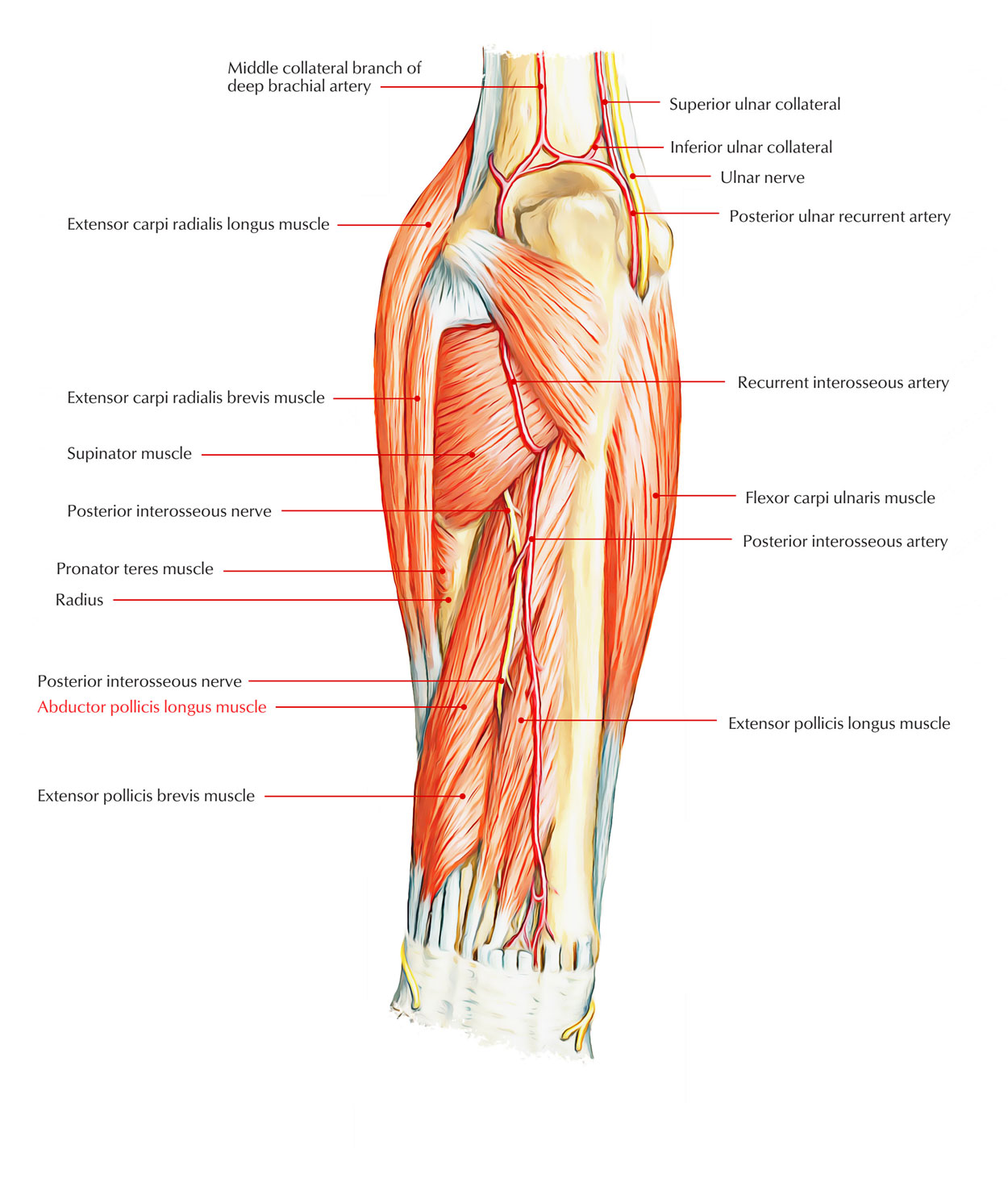The abductor pollicis longus muscle emerges via the associated interosseous membrane and the proximal posterior sides of the radius as well as the ulna. Abductor pollicis longus arises in between the extensor digitorum along with extensor carpi radialis brevis muscles within the distal forearm, in order to create a tendon that enters the thumb and attaches on the lateral side of the base of metacarpal I. The tendon adds to the lateral boundary of the anatomical snuffbox at the wrist.

Abductor Pollicis Longus
Structure
Travelling obliquely down and lateralward, abductor pollicis longus terminates within a tendon, which goes through an indentation on the lateral part of the lower end of the radius, along with the tendon of the extensor pollicis brevis. The abductor pollicis longus is located instantly under the supinator and is often combined with it. The insertion is split within a distal, superficial portion and a proximal, deep portion. The superficial portion of abductor pollicis longus is placed with several tendons into the radial part of the base of the first metacarpal bone, and the deep portion is variably placed within the trapezium, the joint capsule and its ligaments, and in the belly of abductor pollicis brevis or opponens pollicis.
Innervation
- The Radial Nerve.
- the posterior interosseus nerve, C7, C8.
Artery Supply
- The Posterior Interosseus Artery which is a branch of the Ulnar Artery.
- The perforating branches of the Anterior Interosseus artery which is a branch of the Ulnar Artery.
Action
The abductor pollicis longus crosses the first CMC joint anteriorly in order to connect over the metacarpal of the thumb with its fibers going vertically inside the sagittal plane.
Whenever the abductor pollicis longus constricts, it draws the metacarpal of the thumb anteriorly in the sagittal plane, in an instructions that is perpendicular to, and far from the plane of the palm of the hand. This action is called abduction of the thumb.
For that reason the abductor pollicis longus abducts the thumb by abducting the metacarpal of the thumb at the first CMC joint. Due to the rotational development of the thumb embryologically, the called actions of abduction and adduction of the thumb happen within the sagittal plane.
Origin
Abductor pollicis longus originates from the lateral part of the posterior surface of ulna below the anconeus.
Middle one-third of the posterior surface of radius (below the posterior oblique line) and intervening posterior surface of interosseous membrane
Insertion
Lateral side of the base of first metacarpal.
Function
Abductor pollicis longus plays a key role in the abduction of the thumb and extension of the first carpo-metacarpal joint. Abductor pollicis longus also helps in radial deviation and flexion of the wrist.
Clinical relevance
The most important clinical condition involving the APL, usually along with the Extensor pollicis brevis is the DeQuervain’s Syndrome. In this syndrome, tendons of APL start getting thick and inflammation of and EPB resulting in pain and swelling in the first extensor compartment of wrist. Increase in pain can be experienced on movements of thumb making the tendons more susceptible to degeneration and lesions.
Treatment
Management of DeQuervain’s syndrome would depend on the severity of the condition and can include:
- Electrotherapy modalities including local Ultrasound and TENS application.
- Cold packs/heat packs.
- Manual therapy including myofascial release of the tendons and stretching.
- Strength training for long-standing conditions.
- Thumb splinting, medication and taping can be done in very painful or acute cases.


 (83 votes, average: 3.52 out of 5)
(83 votes, average: 3.52 out of 5)